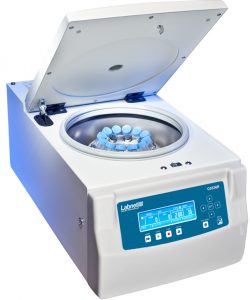Project Report For Centrifuges
Introduction
Project Report For Centrifuges is as follows.
A centrifuge is a laboratory tool used to separate fluids, gas or liquid, according to density. High-speed spinning is used to separate the materials; the centrifugal force forces heavier items to the outside of the spinning vessel. This equipment can be found in most labs, whether they are for academic, clinical, or research purposes. Cells, subcellular organelles, viruses, proteins, and nucleic acids are all purified using it. Centrifuges come in a variety of varieties that can be categorised by rotor design or by intended purpose. For the researcher, there are various options available, from the vast floor variety to the micro-centrifuge.
A laboratory centrifuge is a piece of equipment used to separate liquid samples using the sedimentation process and centripetal acceleration. It may be used for many various things, including the division of cell cultures, DNA/RNA detachment, and the research of infections, proteins, and polymers. Additionally, it is employed in the processing of specimens, the synthesis of novel molecules for drug discovery, and the analysis of foreign particles.

Types Of Centrifuges
Benchtop Centrifuges :- Benchtop centrifuges are within a broad category of centrifuges distinguished by their compact bench footprint. Several various elements might be taken into account, depending on the study need. The maximum speed of RCFs might be as little as a few hundred x g or as high as 50,000 x g. From little than 1 mL (like PCR tubes) to several litres, tube volumes might vary. There is also frequent interoperability across several rotor types, including fixed angle, swinging bucket, and continuous flow. View the assortment of benchtop centrifuges we offer.
Refrigerated Benchtop :- Compact instruments called Refrigerated Benchtop Centrifuges are perfect for centrifuging substances like living organisms, animals, or proteins that may be temperature sensitive. Many have replaceable rotors and adaptors that can accommodate a variety of sample quantities, from a few millilitres to many litres. Moreover, speeds can change, and some models can reach 60,000 x g. See the various benchtop refrigerator centrifuges available today.
Clinical Benchtop :- Clinical Benchtop Centrifuges are small, low-speed centrifuges that are perfect for separating biological fluids and whole blood components such serum, plasma, buffy coat, and red blood cells. Their rotational velocities could range from about 200 to 6,000 rpm. Common blood draw tubes can fit in the majority of clinical centrifuges, but make sure to ask each vendor about specific tube sizes or tube adapters. See a selection of clinical benchtop centrifuges made by various manufacturers.
Get Completely Custom Bankable Project Report
Microcentrifuges :- Many research labs use microcentrifuges as standard equipment since they can typically handle small tube volumes like PCR tubes and tubes with a volume of 2 mL, 1.5 mL, or 1.5 mL. While more specialised devices can spin at rates up to 30,000 x g, normal laboratory microcentrifuges typically spin at up to 16,000 x g. Manufacturers might also provide tube adaptors and replaceable rotors. Compare a range of different refrigerated and ambient temperature microcentrifuges.
Vacuum centrifuges/concentrators :- Vacuum centrifuges and concentrators can remove liquid solvent for sample concentration or desiccation using centrifugal force, vacuum, temperature, and/or gas. The purification or preparation of samples such nucleic acids, proteins, peptides, and other substances for a range of scientific applications is suitable with this apparatus. Vacuum centrifuges commonly make use of integrated heating systems for solvent evaporation. Visit this page to see the various vacuum concentrators.
Market Potential of Centrifuges
In 2022, the global market for laboratory centrifuges was expected to be worth US$ 1.7 billion. the market would develop at a compound annual growth rate (CAGR) of 4.3% between 2023 and 2028, reaching US$ 2.2 billion.
An extensive study of the market for laboratory centrifuges for the foreseeable future is provided by the research. The study is broken up into several sections, each of which contains an examination of the key trends and factors. The motivators, restrictions, opportunities, and problems that serve as instructive instances of how these elements impact the market are included among these components, or the market components.
Drivers and restrictions are fundamental qualities of the market, whereas excellent opportunities and impediments are inessential components. The research of the global laboratory centrifuge market offers insight into how the market will change financially throughout the forecast period.

